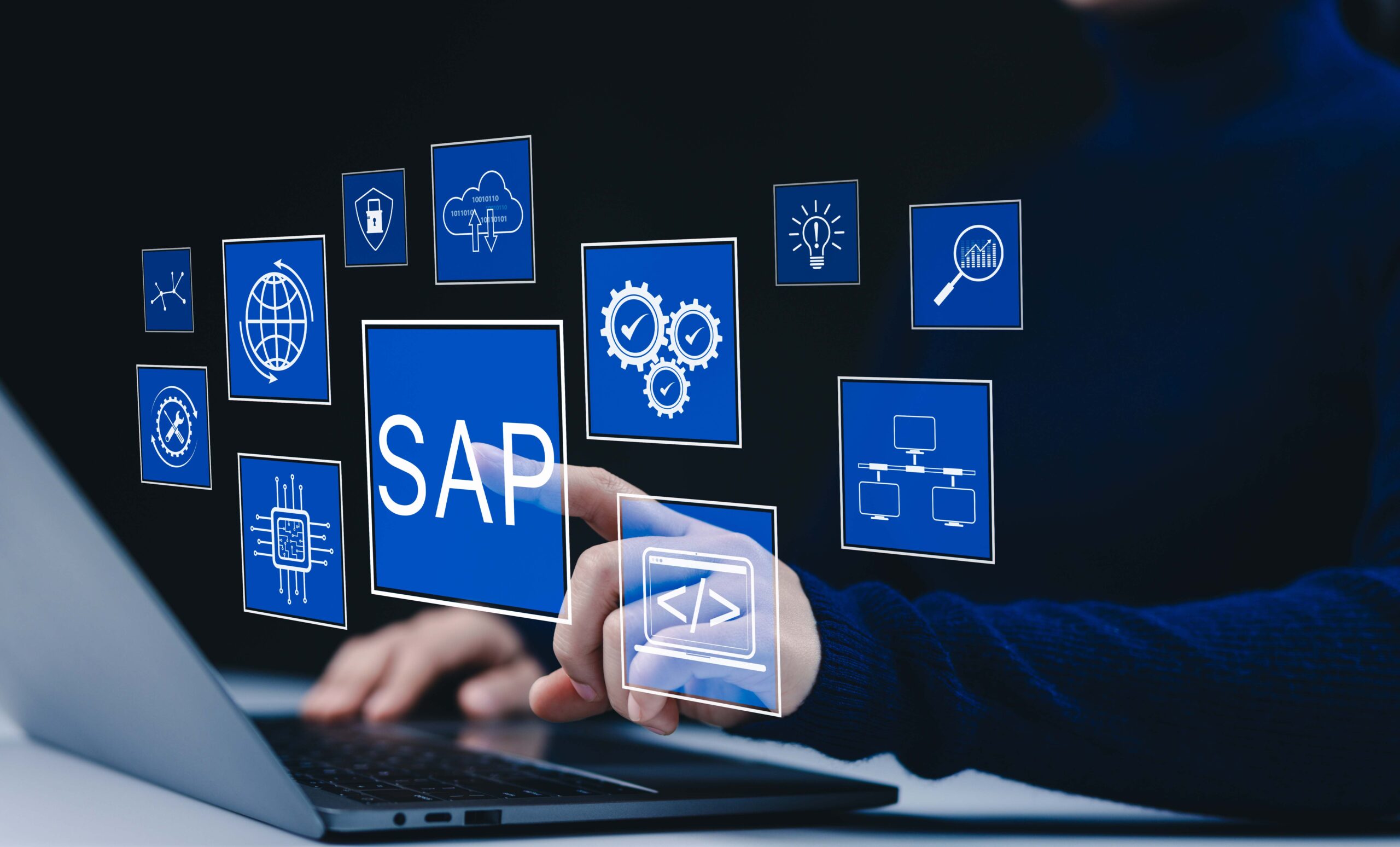Innovation continues at SAP, with TechEd 2024 showcasing SAP’s unrelenting focus on business AI and its seamless integration across SAP systems and applications. Announcements were made on how Joule is enhancing everything from troubleshooting errors in invoices to accelerating ABAP development, how SAP Build now includes ABAP development capabilities, the role of cloud ERP in today’s business environment, and new enhancements in data and analytics and integration.
Due to
Juergen Mueller’s unexpected departure,
this year’s keynote was hosted by Muhammad Alam, SAP Executive Board member and Head of SAP Product Engineering. However, while Alam opened and closed the keynote, it was Michael Ameling, the Executive Vice President and Chief Product Officer for SAP Business Technology Platform (BTP), who led much of the keynote. Given that the TechEd focus is primarily on tools and technology, and SAP BTP has been a huge part of Mueller’s board area in the past, this makes perfect sense.
Other keynote speakers included Florian Heretsch, Senior Vice President and Head of Cross Product Engineering and Experience; Jan Gilg, President and Chief Product Officer for Cloud ERP; Ritu Bhargava, President and Chief Product Officer for Customer Experience; Arin Bhowmick, Chief Design Officer (SAP America), and Philipp Herzig, SAP’s Chief AI Officer.
During the first half of the keynote, Ameling focused on technology advances in SAP BTP which included demonstrations on Joule’s new capabilities to add customizations to SAP S/4HANA Cloud along with the generative AI toolkit for SAP HANA Cloud. In the latter part of the keynote, all the remaining speakers, except Herzig, took centerstage and discussed the needs of TechIt Technologies, an example mid-sized company looking to expand their operations from the US to India. While the focus was on practical applications of SAP solutions for addressing the needs of the company, it reflected a more promotional tone centered on the capabilities of various SAP solutions. Herzig concluded the keynote with AI specific announcements around Joule, Generative AI Hub, and SAP Knowledge Graph, reinforcing SAP’s focus on AI related innovation.
Business AI is the Focus
As has been since the start of 2024, SAP has focused extensively on AI and that was reflected in the keynote as speakers discussed how SAP has added AI to its solutions and positively impacted business processes. This gave the spotlight to generative AI, and SAP’s generative AI copilot Joule, which was at the core of SAP’s many new announcements as the company continues to emphasize Joule as the primary way of interfacing with applications in the near future.
While the focus on using AI in business applications remains unchanged, the emphasis is more on the underlying technologies that enable developers to do more using SAP’s AI foundation. SAP is now focusing on its partner ecosystem to develop new use cases and scenarios, and has over 100 partners building on the SAP AI Foundation in addition to the existing 100 AI use cases that SAP has developed.
Much of this is available to customers using Generative AI Hub which is intended to facilitate access to all the models that are available via SAP BTP. Generative AI Hub can also interact with the latest models from OpenAI, Google Gemini, Meta, or Aleph Alpha, and enables end-to-end hosting of models within an SAP data center. This would allow European customers, for example, to use a European large language model (LLM) and deploy it in a European data center.
Although Generative AI Hub is the way for organizations to build AI into their own applications, SAP is focusing on using Joule as the primary interface for business users and is working towards offering Joule support in 80% of the most used workflows and tasks in SAP applications. SAP is adding new capabilities to Joule and is on track for reaching their goal by the end of this year.
Additionally, the newly released
Joule for Mobile will be the main entry point for interaction with SAP solutions and also improve accessibility. Although Joule’s mobile interface will only be available for some applications in 2024, Concur and SuccessFactors mobile applications will support Joule in early 2025.
Joule Studio, a part of SAP Build, will also allow organizations to augment Joule by enabling them to design new custom capabilities and customize and extend existing capabilities.
Bringing together different types of data is another core focus area for SAP especially when using AI. Organizations often ignore their metadata even though it provides additional insights and describes the way objects in a system use data. SAP is helping address this with the introduction of
SAP Knowledge Graph which will be available in the first half of 2025.
The first knowledge graph scenarios will use SAP S/4HANA data and will enable organizations to connect natural language and structured data to better understand complex data relationships. This is because one of the biggest challenges with using AI today is data hallucination which can be reduced or eliminated by using knowledge graphs. SAP has already created a knowledge graph that connects more than 452,000 tables, 80,000 CDS views, and 7.3 million fields in SAP S/4HANA. During the next year this will be integrated into SAP’s One Domain Model.
The last major AI announcement in the keynote was about
collaborative AI agents. SAP will include a library of collaborative AI agents that span multiple business functions in Joule. While SAP has built these using LLM and retrieval augmented generation (RAG), to make them more powerful, SAP is planning to introduce reasoning models as well. These agents will support cross-functional workflows via multi-agent collaboration, and users will be able to build custom agents using Joule studio in SAP Build. Each agent will include specific business expertise, but Joule will be able to combine multiple agents to meet broader objectives.
SAP Build to Support ABAP
SAP Build was launched in 2022 with a focus on low-code development and extending critical business applications to address the unique needs of SAP customers. SAP Build Code was added in 2023 and enabled low-code developers to work with professional developers and leverage Joule as part of their development process. Now, SAP Build will support ABAP development and will include new generative AI capabilities.
With this addition, and access to ABAP Cloud from SAP Build, users will be able to develop clean core components in ABAP, Java, and Java Script. SAP Build lobby will be the entry point for all development projects including ABAP and will allow organizations to access all their tools from a single location.
Joule’s use within SAP Build was also highlighted in the sessions at TechEd and was exemplified by Joule’s ABAP developer capabilities that support business object generation, code completion, unit test generation, and code explanation. Joule will also provide capabilities for document information extraction, recommendations, and complete process generation which will guide developers and also summarize a workflow. Other new Joule capabilities in SAP Build include contextual assistance with embedded SAP Help and community assistance and
Joule studio in SAP Build which allows organizations to enhances Joule capabilities with custom skills and organization specific workflows.
Lastly, SAP Build will now provide deeper integration with SAP S/4HANA with a new extensibility wizard for developing custom UI fields and custom logic. This will enable developers to create extensions and applications using on-stack and side-by-side extensibility.
RISE with SAP to Provide In-Content Intelligence from Joule
While Joule has been available in SAP S/4HANA Cloud Public Edition since July, SAP S/4HANA Cloud Private Edition FPS02 will include new use cases for interacting with Joule. Due for release in the fourth quarter of 2024, the goal is to enhance navigation and context for users while improving interactivity by bringing data into Joule and allowing users to remain in the same interface.
SAP S/4HANA Cloud Private Edition FPS02 will also include an implementation wizard to standardize extensions. This wizard installs a model that evaluates extensions built with low-code, no-code, and pro-code tools on SAP S/4HANA and SAP BTP. By the end of 2024, SAP plans to incorporate Joule into the top 300 SAP Fiori apps and provide the capacity to manage master data change requests within SAP S/4HANA Cloud Private Edition. This will limit the need for users to navigate across multiple menus and will automatically share changes with key users. Joule will also be available to all SAP S/4HANA Cloud Public Edition users by the end of 2024.
What Does This Mean for SAPinsiders?
One of the biggest challenges that SAP is addressing is ensuring AI is ready for the enterprise. While some organizations have made significant investments in AI, they have shared with SAP that implementing AI in the enterprise has been more challenging than anticipated. And, while AI use cases demonstrate value, proving return on investment (ROI) remains challenging.
Considering this, SAP is looking to provide AI use cases out-of-the-box which will enable customers to realize AI’s value quickly. This is why SAP has embedded generative AI in the most commonly used workflows and tasks across its solutions. By having AI built directly into business functionality, organizations will be able to realize value more quickly. This also extends to Joule in SAP Build, which equips developers with tools that will make them more productive. All this also allows SAP to support “clean core” extensions whether these are on-stack or side-by-side.
However, one of the challenges for SAPinsiders is that a significant portion of these AI capabilities are only available to those with RISE with SAP or GROW with SAP contracts. Joule can be licensed directly for use in some applications, but it is only available in SAP S/4HANA Cloud Private Edition to companies with a RISE with SAP Premium Plus contract. Customers running SAP S/4HANA on premise can extend their solutions with AI using intelligent scenario lifecycle management (ISLM) which integrates with SAP BTP to manage integration and model lifecycle. However, this is a custom extension for on-premise customers and requires more work to use than what is available in SAP S/4HANA Cloud.
Another challenge facing customers building extensions using the ABAP environment in SAP Build is around service level agreements (SLAs). This is because SAP BTP’s SLA is not equivalent to that offered by SAP S/4HANA. While the difference may only be one or two percent, depending on contract, over a year, this may add up to two or even three days of difference in potential downtime. Therefore, it is important to understand both the benefits and downsides of using different extensibility approaches.
Some significant announcements across SAP BTP and other SAP solutions were also made. These include many new business focused AI capabilities, new capabilities for developers in SAP Build, the ability to use generative AI to accelerate the move to RISE with SAP, new data and analytics capabilities, and improvements to SAP Integration Suite. However, many SAP customers will not be able to leverage these enhancements unless they either accelerate SAP BTP adoption or the move to RISE with SAP. They may also need to pay a premium to access these AI features. Given these challenges, what plans should customers make?
- Develop or extend existing business strategies to use AI more effectively. It is vital to understand how generative AI will fit into existing landscape, infrastructure, and ecosystem plans. Only organizations having fully developed plans will be able to effectively use AI and deliver a demonstrable ROI. Rushing to deploy AI without understanding how it fits could result in considerable outlay with limited return.
- Understand the role cloud ERP plays in SAP’s future. The end of SAP’s mainstream maintenance in 2027 is quickly approaching. While many organizations will be able to roll onto extended maintenance, this may be an uncomfortable situation for those with no firm plans for their ERP future. SAP is not changing course on the end of mainstream maintenance and is limiting capabilities for those not moving to SAP S/4HANA Cloud. Organizations must finalize decisions on whether or not to move to SAP S/4HANA and plan for those changes accordingly.
- Embrace technology enhancements where possible. In the past, technologies and features announced at TechEd were available to most SAP customers. Now it is necessary to have the right solution or license to use them. Organizations should ensure they are using the technology enhancements that are available to them. Historically, many SAP customers have overlooked product enhancements either due to a lack of awareness or reliance on customizations to achieve similar outcomes. However, it is more expensive to support and maintain customizations than it is to use a native product feature. Using standard features also makes future upgrades easier. Thus, it is important for organizations to be informed about SAP’s announcements about product enhancements and use those where possible. Sites like SAP Discovery Center can help organizations learn about new enhancements and provide examples of how they can be used in their environments.









